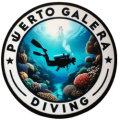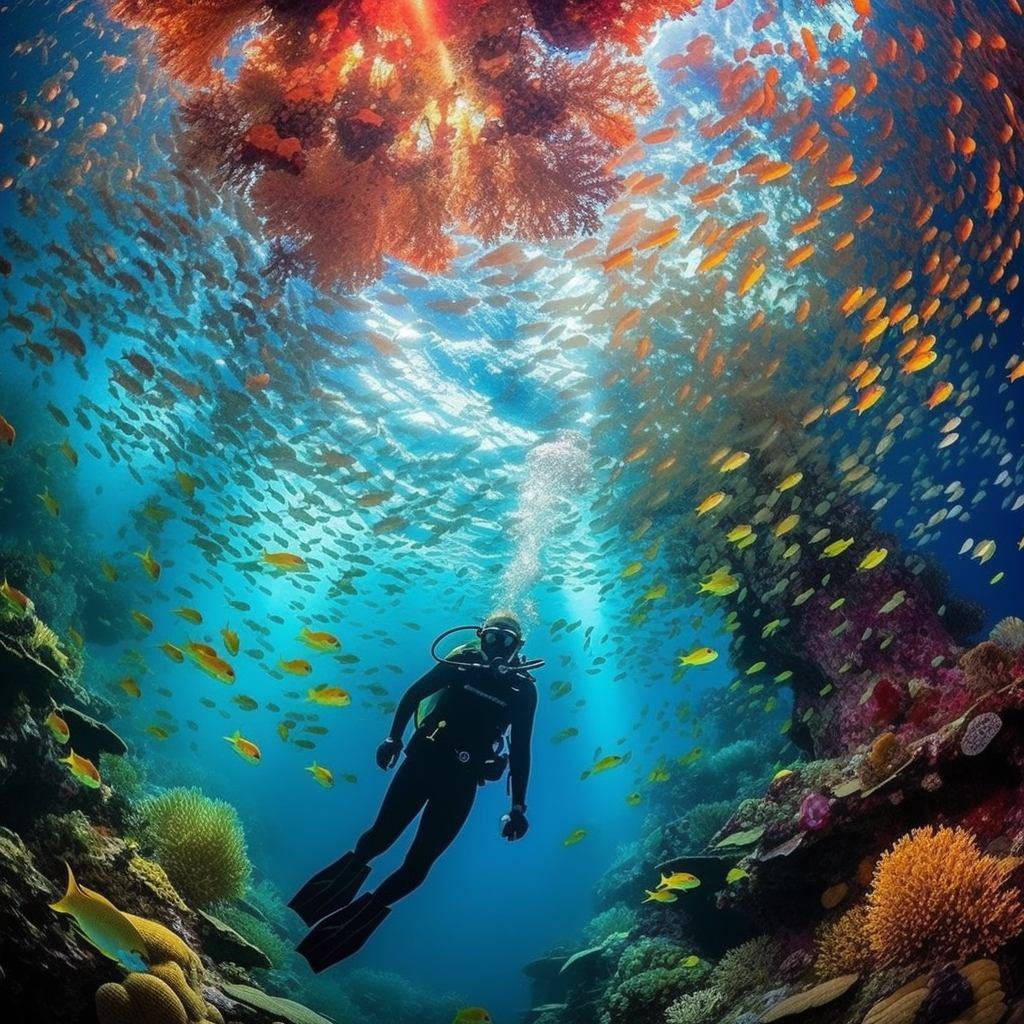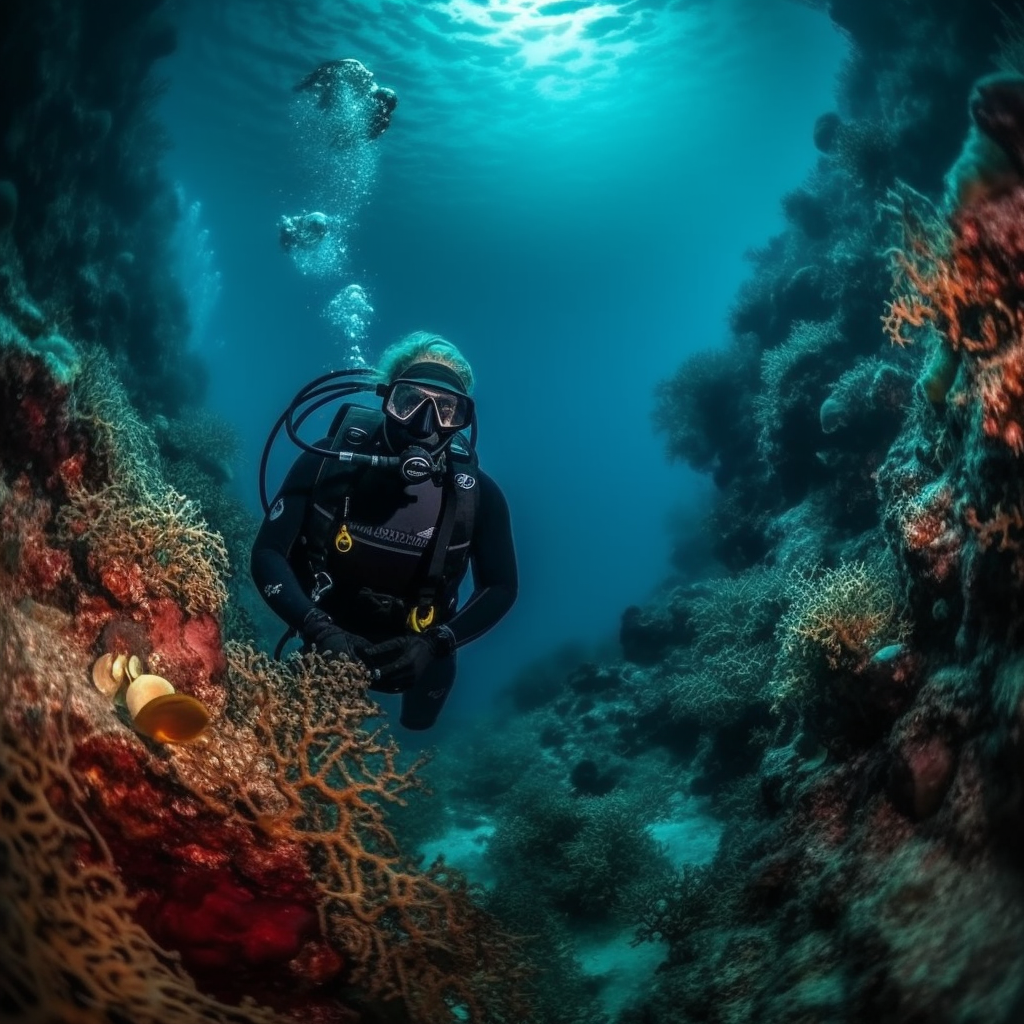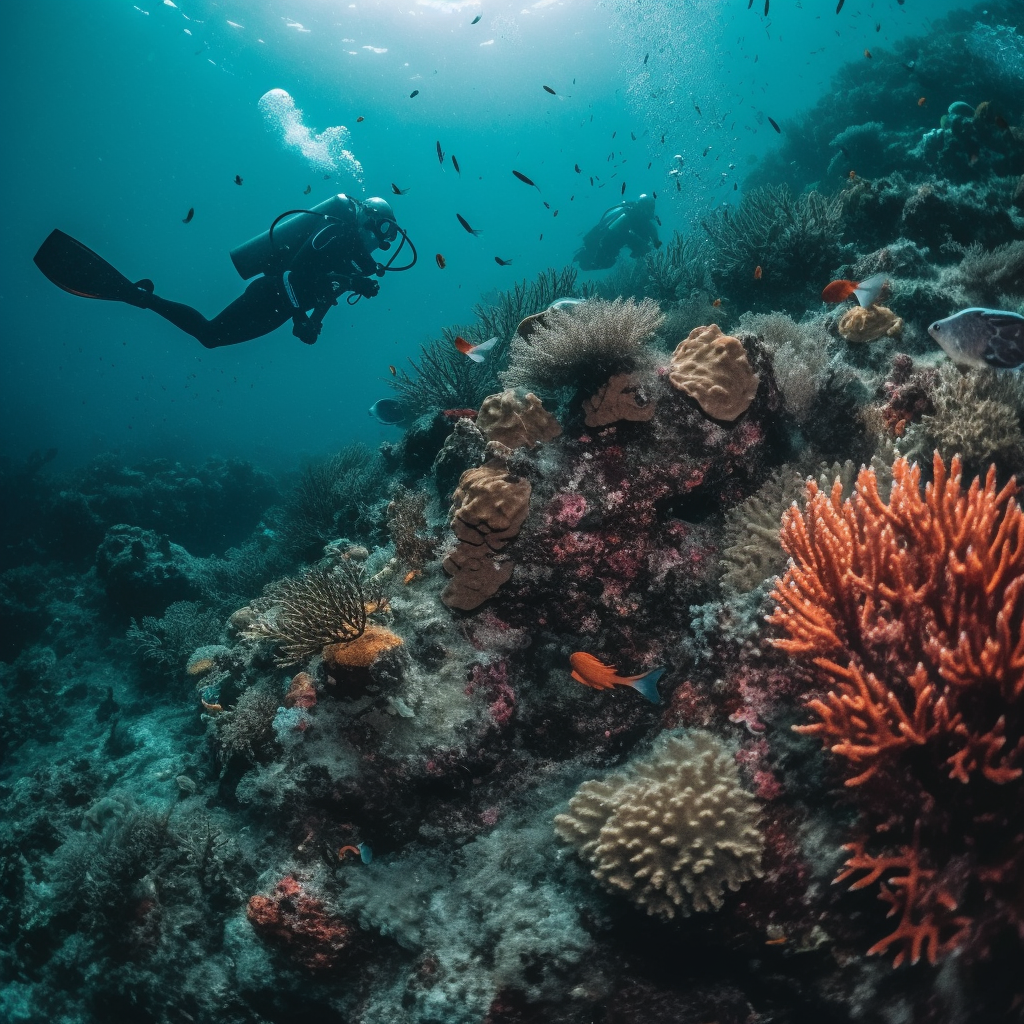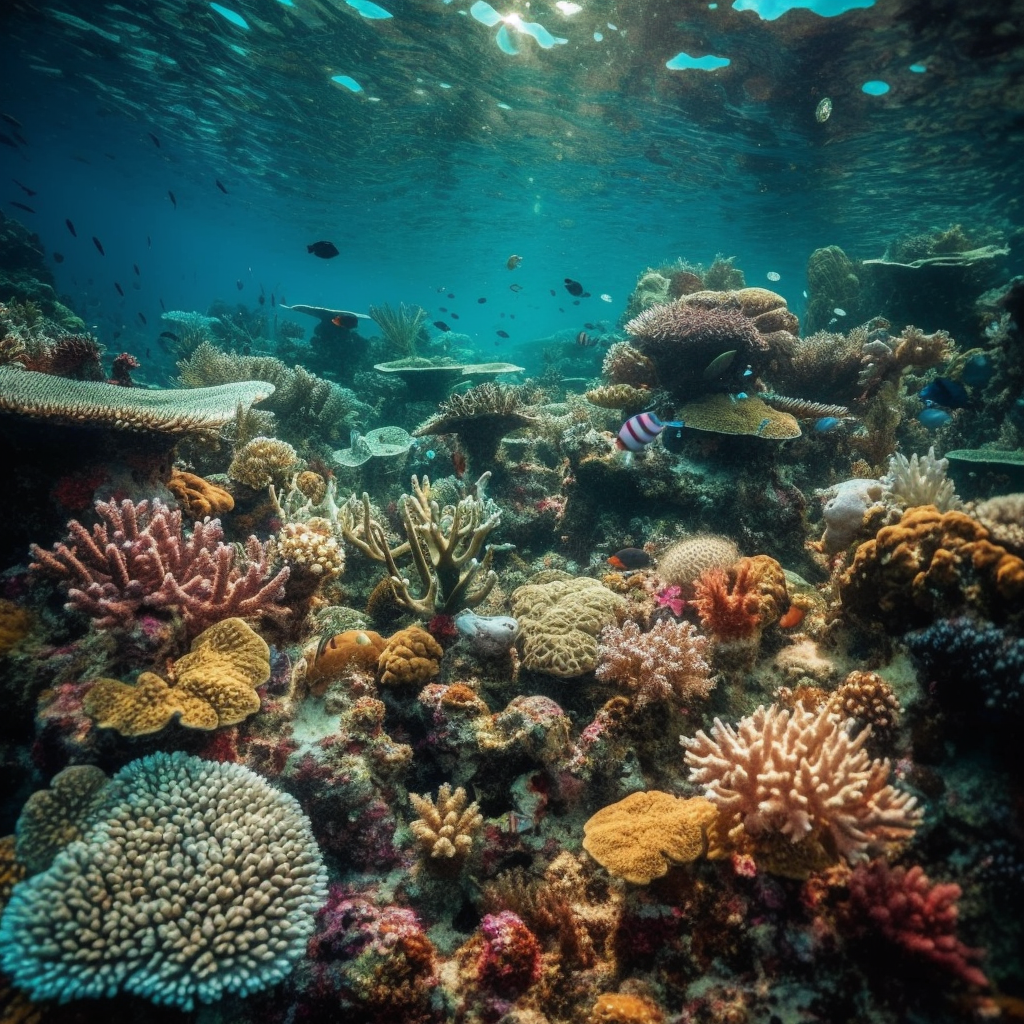Scuba diving is an amazing experience that allows people to explore the underwater world. However, it requires a set of skills that are essential for safe and enjoyable diving. Without these skills, scuba diving can be dangerous and unpleasant. Therefore, it is important to know what skills are needed before diving into the water.
The basics of scuba diving include knowing how to use the equipment, how to breathe underwater, and how to control buoyancy. These skills are taught in scuba diving courses and are essential for any diver. In addition, divers need to know how to communicate with their dive buddy and how to plan and execute a dive. These skills ensure that divers can stay safe and have fun while exploring the underwater world.
Overall, scuba diving requires a set of basic skills that are essential for safe and enjoyable diving. These skills include knowing how to use the equipment, how to breathe underwater, how to control buoyancy, how to communicate with a dive buddy, and how to plan and execute a dive. By mastering these skills, divers can have a great time exploring the underwater world.
Understanding Scuba Diving
Scuba diving is an exciting and adventurous activity that allows individuals to explore the underwater world. However, it requires proper training, skills, and knowledge to ensure safety and enjoyment during the dives. The following section provides a brief overview of the skills needed to become a competent scuba diver.
PADI Open Water Diver Course
The PADI Open Water Diver Course is the most popular scuba diving certification program worldwide, offered by the Professional Association of Diving Instructors (PADI). It is a comprehensive course that covers the basics of scuba diving, including dive theory, equipment, safety, and practical skills. The course consists of three main parts: knowledge development, confined water dives, and open water dives.
Confined Water Dives
Confined water dives are conducted in a pool or shallow water area, where divers learn and practice essential scuba skills, such as buoyancy control, regulator recovery, mask clearing, and emergency procedures. These skills are crucial for safe and comfortable diving and must be mastered before moving on to open water dives.
Open Water Dives
Open water dives are conducted in the ocean, lake, or other natural bodies of water, where divers apply the skills learned in confined water and gain experience in real-world diving conditions. During the open water dives, divers demonstrate their ability to plan and execute dives, navigate underwater, and handle emergency situations.
Open Water Certification
After completing the PADI Open Water Diver Course, divers receive a certification that allows them to dive up to 60 feet deep independently or with a buddy. However, it is essential to continue learning and practicing scuba skills to become a proficient and safe diver.
Skin Diving
Skin diving is a form of diving that involves diving with minimal equipment, such as a mask, fins, and snorkel. It is an excellent way to explore shallow waters and observe marine life without the need for scuba gear. Skin diving also helps improve swimming and breath-holding skills, which are essential for scuba diving.
Conclusion
In conclusion, scuba diving requires proper training, skills, and knowledge to ensure safety and enjoyment during the dives. The PADI Open Water Diver Course is an excellent starting point for anyone interested in scuba diving, as it covers the basics of scuba diving and provides a certification that allows diving up to 60 feet deep. However, it is essential to continue learning and practicing scuba skills to become a proficient and safe diver.
Scuba Diving Gear Essentials
Understanding the Scuba Unit
The scuba unit is the heart of the diving gear and is responsible for supplying air to the diver. It consists of a tank, regulator, pressure gauge, and low-pressure inflator. The tank is filled with compressed air and is attached to the regulator, which controls the flow of air to the diver. The pressure gauge shows the amount of air left in the tank, and the low-pressure inflator is used to inflate the buoyancy control device (BCD).
Importance of the Mask
The mask is an essential piece of scuba gear that allows the diver to see underwater. It creates an air pocket in front of the eyes, which enables the diver to focus and see clearly. A good mask should fit snugly, be comfortable, and have a tempered glass lens.
The Role of the Buoyancy Control Device (BCD)
The BCD is a vital piece of scuba gear that helps the diver control their buoyancy. It is worn like a vest and can be inflated or deflated to adjust the diver’s buoyancy. The BCD also has pockets for weights, which help the diver maintain neutral buoyancy.
Understanding the Regulator
The regulator is responsible for delivering air from the tank to the diver. It consists of a first stage, which attaches to the tank, and a second stage, which the diver breathes from. The regulator also has a mouthpiece and a purge button, which the diver can use to clear water from the regulator.
The Dive Computer: An Essential Tool
The dive computer is an essential piece of scuba gear that helps the diver track their depth, time, and nitrogen levels. It calculates the amount of time the diver can spend at a certain depth before they need to ascend to avoid decompression sickness. A good dive computer should be easy to read, have a clear display, and be easy to use.
In conclusion, scuba diving gear essentials are essential for a safe and enjoyable dive. The gear includes a scuba unit, mask, BCD, regulator, and dive computer. Each piece of gear has a specific role and function, and it is essential to understand how to use them correctly. With the right gear and knowledge, scuba diving can be a fantastic experience.
Mastering Basic Scuba Diving Skills
Scuba diving is an exciting activity that requires a set of basic skills to ensure safety and enjoyment. Mastering these skills is essential for any beginner scuba diver. In this section, we will discuss the essential skills that every scuba diver should master before going on a dive.
Mask Clearing Techniques
Clearing your mask is an essential skill that every scuba diver should master. The mask can get foggy or filled with water, which can obstruct your vision and cause discomfort. There are several techniques to clear your mask, such as the standard mask clearing and the no-mask breathing technique. These techniques involve exhaling through your nose or mouth to remove water or fog from your mask.
Regulator Recovery Skills
Regulator recovery is another essential skill that every scuba diver should master. The regulator is the device that allows you to breathe underwater, and it can sometimes fall out of your mouth or get tangled. The basic regulator recovery skill involves retrieving the regulator and clearing it of water before reinserting it into your mouth.
Hand Signals in Scuba Diving
Hand signals are a crucial form of communication in scuba diving. They allow divers to communicate underwater without the need for verbal communication, which can be difficult due to the pressure and noise. Basic hand signals include the okay signal, the ascend signal, and the stop signal, among others.
Mastering these basic scuba diving skills is essential for any beginner scuba diver. These skills ensure safety, comfort, and enjoyment during dives. In addition to these skills, scuba divers should also master other essential skills such as swimming, breath control, controlled descents, and trim. Knowledge development is also crucial to ensure that divers understand the basic principles of scuba diving.
Understanding Advanced Scuba Diving Skills
Scuba diving is an exciting and rewarding activity that allows individuals to explore the underwater world. However, it is important to have the necessary skills to ensure safety and enjoyment during dives. Advanced scuba diving skills are essential for divers looking to take their diving to the next level.
Emergency Swimming Ascent
An emergency swimming ascent (ESA) is a critical skill that should be mastered by all scuba divers, especially advanced ones. It is used when a diver needs to quickly ascend to the surface in an emergency situation, such as when they are running out of air. During an ESA, the diver must swim to the surface while exhaling continuously to prevent lung over-expansion injuries.
Alternate Air Source Ascent
In the event of a malfunctioning regulator, an alternate air source ascent (AAS) is a necessary skill for advanced divers. During an AAS, the diver must switch to their alternate air source and ascend to the surface while exhaling continuously. This skill requires coordination and practice to ensure a safe ascent.
Free-Flowing Regulator Management
A free-flowing regulator is a common issue that can occur during dives. Advanced divers must know how to manage a free-flowing regulator to prevent air loss and ensure a safe ascent. Techniques such as partially closing the valve and purging the regulator can help manage a free-flowing regulator.
Overall, advanced scuba diving skills are complex and require practice and mastery. Divers must be confident and knowledgeable in these skills to ensure their safety and enjoyment during dives. By mastering these skills, divers can take their diving to the next level and explore the underwater world with greater ease and confidence.
| Skill | Importance |
|---|---|
| Emergency Swimming Ascent | Critical |
| Alternate Air Source Ascent | Necessary |
| Free-Flowing Regulator Management | Important |
- ESA and AAS are critical skills for emergencies.
- Free-flowing regulator management is important to prevent air loss.
- Advanced scuba diving skills require practice and mastery.
Planning and Safety in Scuba Diving
Scuba diving requires proper planning and safety measures to ensure a safe and enjoyable experience. Certified divers must have the necessary skills and knowledge to handle emergency situations and understand the risks associated with diving. Here are some essential skills for planning and safety in scuba diving.
The Buddy Check System
The buddy check system is a pre-dive safety check that every diver should perform with their dive buddy. It ensures that all equipment is properly set up and functioning correctly. The buddy check includes checking the following items:
- Regulator: Check that the regulator is attached to the tank and functioning correctly.
- Buoyancy Control Device (BCD): Check that the BCD is properly inflated and deflated.
- Weights: Check that the weights are properly secured and distributed.
- Releases: Check that all releases are properly secured and functioning correctly.
- Air: Check that both divers have enough air and that the pressure gauge is functioning correctly.
Understanding Dive Depth and Pressure
Divers must have a good understanding of dive depth and pressure to ensure their safety. The maximum depth for recreational diving is typically 130 feet, but this can vary depending on the certification level and experience of the diver. Divers must also understand the risks associated with diving at deeper depths, such as nitrogen narcosis and decompression sickness.
Handling Emergency Situations
Divers must be prepared to handle emergency situations that may arise during a dive. This includes having a plan in place for handling emergencies and knowing how to use emergency equipment, such as an oxygen tank or first aid kit. Divers must also understand the importance of communication during an emergency and know how to signal for help.
In conclusion, planning and safety are essential skills for scuba diving. Divers must have the necessary knowledge and skills to ensure a safe and enjoyable experience. By following the buddy check system, understanding dive depth and pressure, and knowing how to handle emergency situations, divers can minimize the risks associated with diving and enjoy the beauty of the reef.
Scuba Diving Certification and Training
Scuba diving is an exciting and rewarding activity that requires proper training and certification. In order to become a certified scuba diver, one must complete a course that includes both classroom and in-water training. The following sub-sections discuss the different aspects of scuba diving certification and training.
PADI eLearning and In-Water Sessions
PADI (Professional Association of Diving Instructors) is a well-known and respected organization that offers scuba diving courses. One of the options available to students is to complete the classroom portion of the course online through PADI eLearning. This allows students to learn at their own pace and on their own schedule. After completing the eLearning portion, students then participate in in-water training sessions with a certified instructor.
During the in-water sessions, students learn important skills such as how to use their air supply, how to swim with proper technique, and how to use a wetsuit. They also learn how to use a submersible pressure gauge (SPG) to monitor their air supply and how to perform open water dives safely.
Dive Centers and Resorts
Dive centers and resorts are excellent resources for scuba diving certification and training. These facilities typically offer both classroom and in-water training sessions, as well as rental equipment and guided dives. They also provide exposure suits such as wetsuits or drysuits for divers to use during their dives.
Dive centers and resorts are staffed by experienced and knowledgeable instructors who can provide guidance and instruction to students. They can also help students choose the appropriate equipment for their needs and skill level.
In conclusion, scuba diving certification and training is an essential part of becoming a safe and competent scuba diver. PADI eLearning and in-water sessions, as well as dive centers and resorts, are excellent resources for those looking to become certified. By completing a scuba diving course and practicing their skills regularly, students can become confident and knowledgeable scuba divers.

